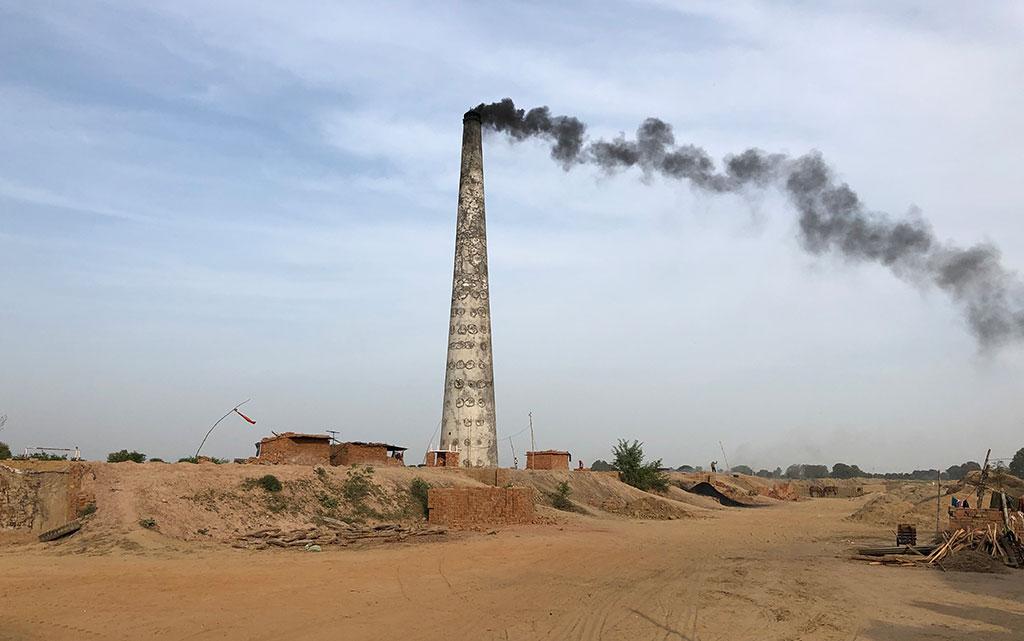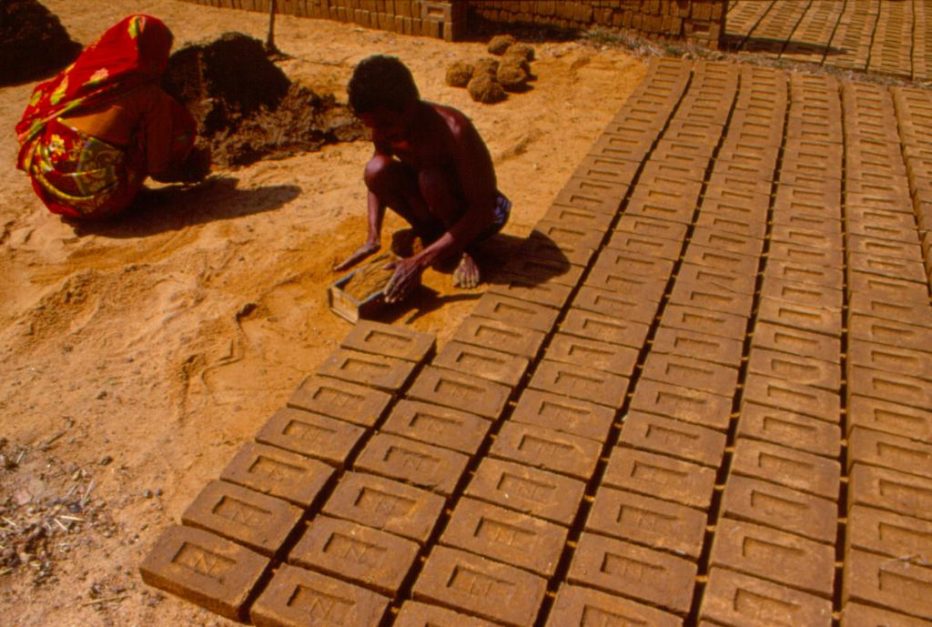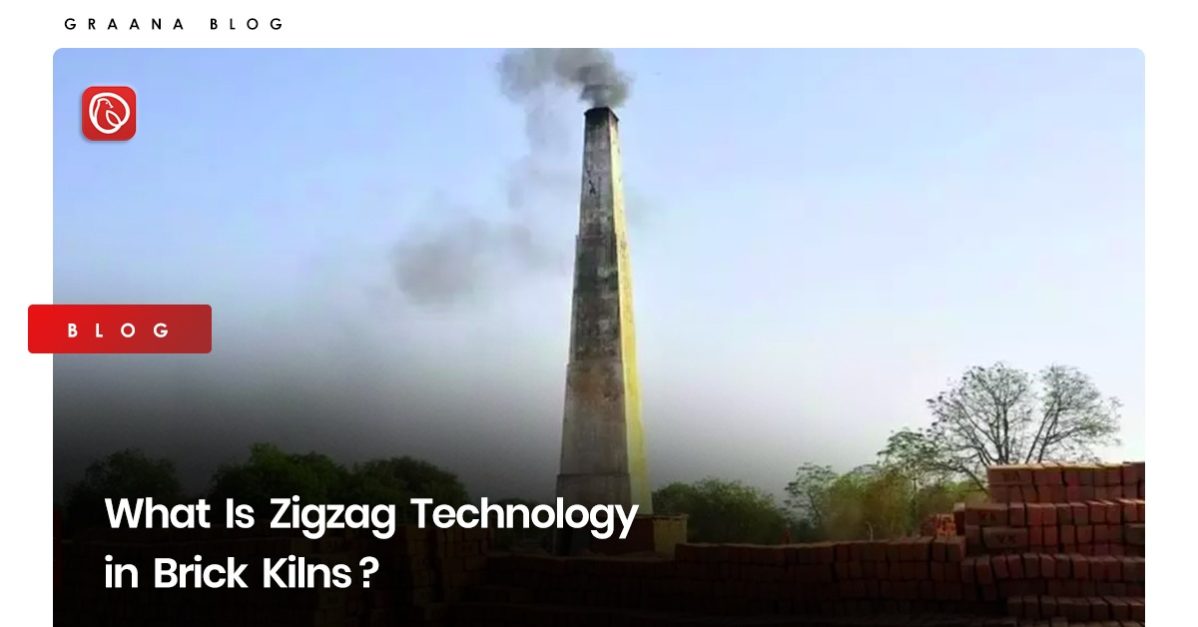Although brick kilns are a vital part of the construction industry, they are also a significant source of air pollution. This is because it emits pollutants, such as particulate matter, sulphur dioxide, and nitrogen oxides. These pollutants can have detrimental effects on both human health and the environment.
Graana.com discusses the concept of zigzag technology as a solution to reduce air pollution from brick kilns, along with its economic benefits and the positive effect on the quality of bricks produced.
Impact of Brick Kilns on Air Pollution

Brick kilns are industrial facilities that are used to produce bricks by firing clay or other materials at high temperatures. This is used for construction and other purposes.
They can have a significant impact on air pollution, thereby causing a range of health problems, including respiratory diseases.
Concept of Zigzag Technology

Zigzag technology is a method of firing bricks in a kiln that uses a unique design to reduce emissions of pollutants and increase efficiency. The bricks are arranged in a zigzag pattern. Flue gas recirculates through the bricks, which leads to a more efficient burning process. The hot flue gases produced during the firing process are directed through the zigzag pattern of bricks.
This heats them from all sides and allows for a more efficient burning process. This results in less fuel consumption, lower emissions of pollutants, and a more consistent and higher-quality product.
Additionally, this recirculation of flue gases helps to reduce the emission of pollutants. These include particulate matter, sulphur dioxide and nitrogen oxides. These pollutants are trapped and burned they are released into the atmosphere.
The zigzag kiln technology is a relatively new innovation. It has been developed to cater to the need for more energy-efficient and environmentally-friendly methods. Many countries are increasingly adopting this technology as a solution to reduce air pollution from brick kilns It improves the overall efficiency of the production process.
Moreover, the zigzag kiln also allows for better control of the firing process. This leads to a more consistent and higher-quality product. Regulate the temperature and airflow to prevent over-firing of the bricks.
Specific Design and Operation of Zigzag Kilns
The specific design and operation of zigzag kilns vary depending on the manufacturer and specific model. However, it usually follows the same basic principles.
A typical zigzag kiln typically consists of a series of chambers, each section containing a different type of brick. The bricks are arranged in a series of parallel rows. Each row is offset from the one before it, creating a zigzag pattern.
Firing the kiln using either coal or biomass as fuel. Burning it in a separate chamber and producing the hot flue gases by the combustion process.
The bricks are usually fired for several days. It depends on the type and the desired properties. Cool and remove the bricks from the kiln once the firing process is complete.
Environmental Benefits of Using Zigzag Technology in Brick Kilns
Zigzag technology in brick kilns can have several environmental benefits, including:
Increased fuel efficiency
Zigzag technology helps to improve the efficiency of the combustion process, resulting in less fuel consumption and reduced emissions.
Lower greenhouse gas emissions
By using less fuel, zigzag technology can help lower emissions of greenhouse gases such as carbon dioxide and methane.
Reduced particulate matter emissions
Zigzag technology can also help reduce emissions of particulate matter, which can be harmful to human health and the environment.
Increased thermal efficiency
It can help increase the thermal efficiency of the brick-making process, which can reduce energy consumption and lower emissions.
Reduced dependence on fossil fuels
By using less fuel and increasing thermal efficiency, zigzag technology can reduce dependence on fossil fuels, which can promote the use of cleaner, renewable energy sources.
Economic Benefits of Using Zigzag Technology in Brick Kilns
The use of zigzag technology in brick kilns can have several economic benefits, including:
Increased efficiency
The improved efficiency of the brick-making process can lead to lower production costs and higher profits.
Lower fuel consumption
By using less fuel, zigzag technology can lower fuel costs and increase profitability to some degree.
Reduced labour costs
Zigzag technology can also help reduce labour costs by automating certain aspects of the brick-making process.
Increased production capacity
The increased thermal efficiency of the brick-making process can result in a higher production capacity, which can lead to higher revenues.
Reduced maintenance costs
Designing Zigzag technology to improve the durability and longevity of the brick kiln. This can lead to reduced maintenance costs and increased profitability.
Reduced production costs
ith reduced labour costs, fuel costs, and maintenance costs, brick kiln operators are likely to observe a reduction in production costs.
Increased competitiveness
With the economic benefits, brick kiln operators that use zigzag technology will be able to produce bricks at a lower cost than their competitors.
How Zigzag Technology Can Improve the Quality of Bricks Produced
Zigzag technology can enhance the quality of bricks in several ways:
Improved consistency
Zigzag technology can help ensure a consistent and uniform quality of bricks by controlling the temperature and combustion conditions inside the kiln.
Reduced defects
The improved combustion conditions provided by zigzag technology can help reduce defects in bricks, such as cracking or warping.
Increased strength
By controlling the temperature and combustion conditions inside the kiln, zigzag technology can help increase the strength and durability of bricks.
Better colour uniformity
Zigzag technology can also improve the colour uniformity of bricks, resulting in a more consistent and visually appealing product.
Reduced porosity
Reducing the porosity of bricks can improve water resistance and durability of bricks.
Better burning rate
Improving the burning rate of bricks ensures that they can be used after a shorter period of time.
Better energy efficiency
Zigzag technology can also improve the energy efficiency of the brick-making process, which can result in reduced energy costs, and increased environmental and economic benefits.
Challenges & Limitations
While zigzag technology can provide many benefits for the brick-making industry, there are also certain issues with its implementation.
High initial investment
Adopting zigzag technology can be a significant investment, which can be a challenge for smaller brick kiln operators with limited financial resources.
Difficulty in retrofitting existing kilns
Incorporating Zigzag technology into new brick kilns is typical, but retrofitting existing kilns can be difficult and costly.
Limited availability of technology
The technology is not yet widely available and not all regions have the expertise to implement it.
Skilled labour requirement
It also requires skilled labour for operation and maintenance, which can be a challenge in areas with limited access to skilled workers.
Difficulty in ensuring compliance
Ensuring that brick kiln operators are using zigzag technology rightly and maintaining it properly is difficult, which can lead to non-compliance and reduced environmental and economic benefits.
Limited monitoring
Limited monitoring capabilities currently track and measure the efficiency and effectiveness of the new Zigzag technology.
Conclusion
Zigzag technology is a promising innovation in the brick-making industry. It can provide many benefits for the environment, economy and the quality of bricks produced.
Despite its set of challenges, zigzag technology is worth considering for brick kiln operators. This is because it improves their economic performance and produces high-quality bricks.
If you want to know more about types of smart construction technology, visit Graana blog.




